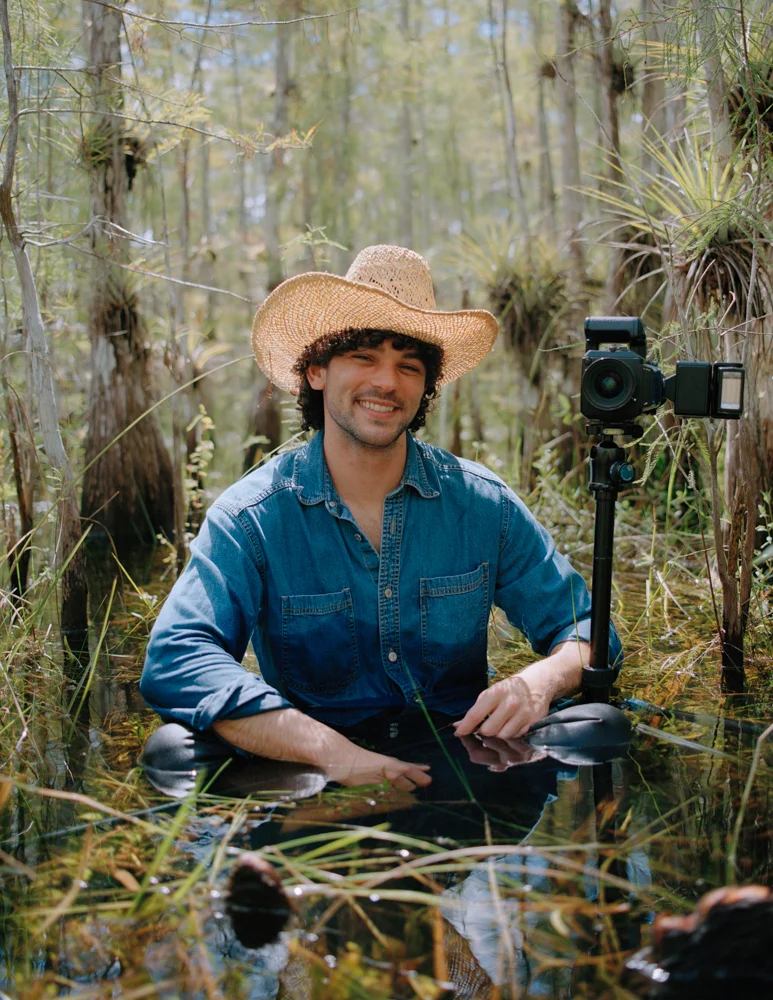Josh Aronson (b. 1994, Toronto, Canada) is a Florida-based artist whose work explores masculinity and landscape in the American South. He was raised in Florida by Iraqi and Polish parents who immigrated to the United States from Canada when he was 3.
Aronson’s photographs have appeared in The New York Times, The Paris Review, The Financial Times, Frieze, Teen Vogue, Italian Vogue, Dazed, i-D, British Journal of Photography, Document Journal, The Guardian, and Apartamento. His first book, Tropicana (2020), is held in the collections of The Metropolitan Museum of Art and The Library of Congress. In 2024, he became the only artist to win both the People’s Choice Award and the Juror’s Prize for No Vacancy, the City of Miami Beach’s public art commission.
Aronson’s work has been exhibited internationally by institutions including The Bass Museum of Art, Florida; Ogden Museum of Southern Art, Louisiana; and Nizhniy Tagil Museum of Fine Arts, Russia. He is the founder of Photo Book Speed Date, an artist-led public program held at Pérez Art Museum Miami and Vizcaya Museum & Gardens, among others, and designed to foster engagement with photo books through fast-paced, rotating conversations.
Awarded Photographer of the Week - Week 43, 2025